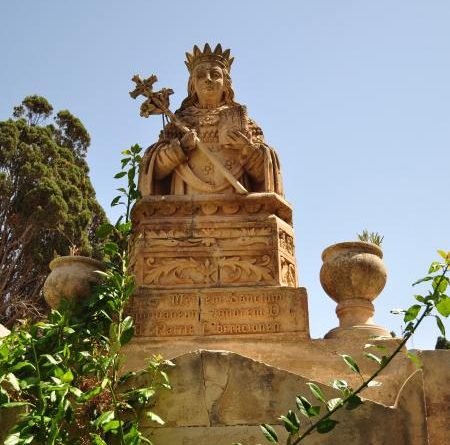Some interesting connection between St Agatha and Malta
The Feast of St Agatha, which we jubilantly celebrated on Saturday 5 February 2022, brought into my heart the beautiful connection that exists between the apostolic island of Malta and this great saint of the third century.
Besides the fact that according to tradition St Agatha fled to Malta and took some refuge here when the Emperor Decius’ persecution was going on, we can mention some references to the cult of this Sicilian saint in Malta. History tells us that a church to St Agatha was built in the year 1504. Others put it that it was simply an re-building of an existent building. The hub for St Agatha’s cult was not a painted altarpiece, as the Apostolic Visitor Mons Pietro Dusina said, but just a gild marble statue of the saint which came from the bottega of the Sicilian sculptor Antonello Gagini (c. 1478-1536).
History also unveils that circa in the same time all statuary components were brought over to Malta from Sicily. The 1460 royal decree demanded a ban on the debts of Antonio d’Agusta, and particularly enlists a seemingly costly, but not better comprehensible statue, ultimately traded locally to Pietro de Ribera.
The gild marble statue of the seated St Agatha was to become a strong strengthening point for the Mdina defenders as the 1551 siege was going on to capture the Old Capital City of Malta. The story goes that there was a penitential procession with the statue of St Agatha all over the bastions that aided to encourage the defenders. This procession completely demoralized the Ottoman Turkish invaders which were led by Sinan Pasha as well as Dragut. The ardent faith of the defenders in the powerful intercession of St Agatha was so huge that the Turks simply abandoned their original plans to ransack Mdina. Thanks to this powerful experience the Maltese held St Agatha in so much high honour that the Cathedral chapter vowed a yearly procession of thanksgiving to her Rabat chapel built precisely above the crypt.
When one studies closely the St Agatha cult one amazingly finds that it goes back to pre-Arab times as the local tradition has it. Sicilian immigrants in the thirteen century reinstituted or reassigned the cult of this Sicilian saint. The cult seems to have dwindled in the 17th century since the 1593 plague caused a foundational change in the cultic and devotional approach of the Maltese people. Another aspect which brought about this block concerning the St Agatha cult was the abolishment of the veglia notturna, or the night of festivities. This prohibition was first authorized by Mons Pietro Dusina in 1575 and, at a later date, it was enforced so strongly by Cagliares in 1613. This nocturnal veglia consisted of a Maltese folkloristic celebration which was the more profane complement of the religious feast which at St Agatha were carried by the Carmelite friars. We find that following 1615 the St Agatha veglia vanished from the local scenario and the Church officially deplored the drunken merry-making that went along these popular national folk gatherings. The only popular veglia to remain with us in Malta is the Mnarja, on the 29th June the feast of Saints Peter and Paul.
Dear St Agatha, glorious virgin and martyr, you suffered yourself to be reviled and buffeted, to be tortured by rack, fire, and sword in a most painful manner; and by this fortitude and heroism you merited to be consoled and gladdened in the midst of your dreadful torments by the sight of your guardian angel and the prince of the apostles: obtain for me, I pray, by your merits and by your intercession with Jesus Christ, your divine Spouse, that I may surfer joyfully every temporal loss, rather than prove unfaithful to my Lord and my God. Ask for me the grace of perseverance, that I may with thee enjoy the beatific vision and praise God forevermore. Amen.
Fr Mario Attard OFM Cap





